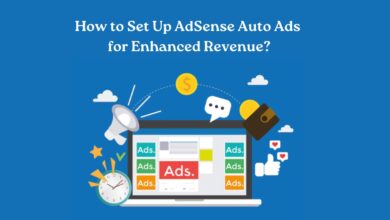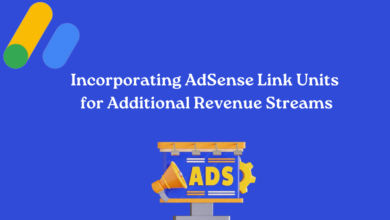Common Google AdSense Violations and How to Avoid Them

Google AdSense serves as a vital revenue stream for countless website owners, yet the journey to sustainable earnings is paved with adherence to its stringent policies. Violations can not only jeopardize revenue but also result in the suspension of accounts. Below, we dissect common AdSense violations and provide actionable strategies to avoid them effectively.
Violations:
1. Invalid Click Activity:
This violation encompasses any deceptive or incentivized clicks or impressions on ads. Clicking one’s ads, utilizing automated clicking tools, or encouraging users to click via misleading means all fall under this category.
2. Placing Ads on Prohibited Content:
AdSense strictly prohibits ads from appearing on pages featuring adult content, violence, hate speech, or copyrighted material.
3. Insufficient Content or Low-Quality Pages:
Thin, plagiarized, or auto-generated content violates AdSense policies. Pages must offer substantial, original content to qualify for monetization.
4. Misleading Ad Placement or Formatting:
AdSense mandates clear differentiation between ads and site content. Deceptive practices, such as placing ads too close to site navigation or disguising them as content, violate these policies.
5. Encouraging Ad Clicks:
Publishers must avoid incentivizing or urging visitors to click on ads through misleading language or disruptive elements. Such practices compromise user experience and violate AdSense policies.
6. Violation of Ad Placement Policies:
AdSense provides guidelines on ad placement, including limits on the number of ads per page and acceptable formats. Penalties are enforced for violations of these policies.
How to Avoid:
1. Monitor Click Activity:
Regularly monitor click activity to ensure it’s organic and genuine. Discourage friends and family from clicking ads and refrain from engaging in click exchanges.
2. Review Content Regularly:
Routinely review website content to ensure it complies with AdSense policies. Promptly remove any prohibited material or user-generated content that violates guidelines.
3. Prioritize Quality Content:
Focus on creating high-quality, original content that adds value to your audience. Avoid thin or plagiarized content, which not only violates policies but also detracts from user experience.
4. Maintain Transparency:
Clearly differentiate ads from site content through labeling or visual cues. Ensure ads are placed strategically without misleading users.
5. Focus on User Engagement:
Instead of resorting to manipulative tactics, prioritize creating engaging content that naturally attracts user interest. Encourage interaction through valuable content rather than incentivizing clicks.
6. Adhere to Placement Policies:
Familiarize yourself with AdSense ad placement guidelines and ensure compliance across your website. Avoid excessive ad placement or formats that violate policies.
By understanding and actively avoiding these common AdSense violations, publishers can safeguard their accounts and optimize their revenue potential. Adhering to AdSense policies not only fosters a healthy advertising ecosystem but also enhances user trust and engagement on your website.
To know more about Google AdSense, please visit www.intogeeks.com




